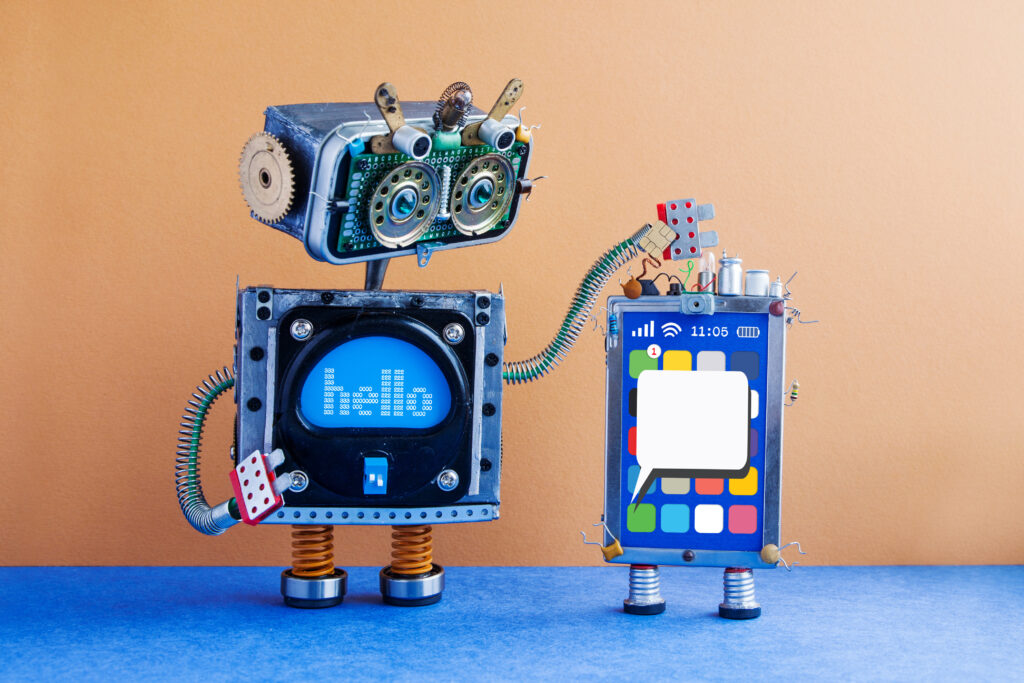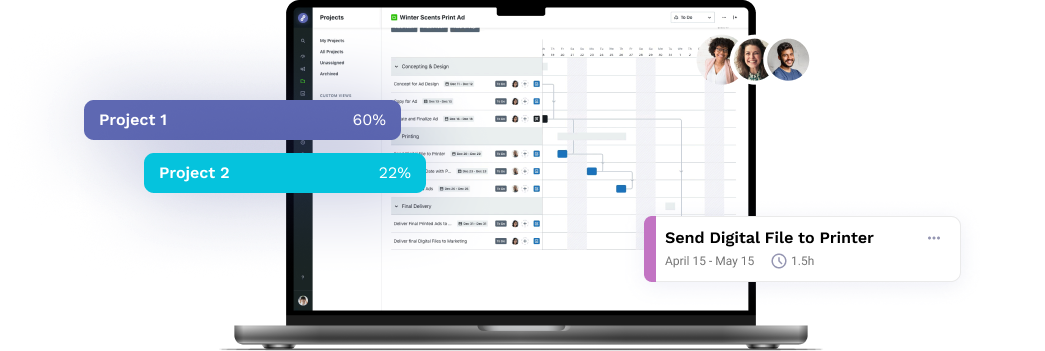
Creative Automation Evolution
This article is the final of three in our series on Creative Automation. Check out Part One: What Is Creative Automation and Why Should You Care? and Part Two: How Do I Select the Right Creative Automation Tools for My Team?
As we move into the Age of Creative Automation, the effects that this new wave of technology is going to have on us, creatives, are more apparent than ever before. They may range from increased job satisfaction to downright job displacement – and everything in between.
Join us in this final article of our Creative Automation series, where we discuss:
- The evolution of creative automation software.
- Its far-reaching effects on the future of creativity.
- The potential effects on creative professionals and their work.
What is Creative Automation Evolution? And How Does It Connect to the Future of Creativity?
Creative automation evolution is the umbrella term we use to describe the changes that the creative field, and the professions associated with it, undergo as a direct result of ever-evolving technology that aims to automate more aspects of creative work and the creative process. The existence and pace of this evolution has been the source of polarizing commentary by creative people and their collaborators.
Proponents of the software argue that such automation brings about positive change to creative work. They claim it does so by taking away all the boring and repetitive tasks that can be automated. In this way, creative professionals can focus on the interesting, engaging, and meaningful aspects of their work. They reason that when in getting rid of the less appealing aspects of work, we reduce burnout rates among creatives.
To the contrary, creative automation opponents warn against the potential negative impact of the software on creative output. They voice their fears over the lack of future employment prospects for creative people should this type of software be allowed to develop further. If such software is continuously fed unfathomable amounts of data, some think it will eventually replace people.
What Will the Impact of the Creative Automation Evolution Be on Creative Professionals and Their Work?
There are arguments to be made both for and against creative automation tools and their impact on creative professions. Some of the most-discussed issues are:
Positive Effects of Creative Automation:
More Meaningful Work: Creative automation can streamline repetitive tasks, allowing creative professionals to focus more on higher-level thinking and producing work that resonates more with their true passion and that makes use of their full artistic potential.
Cost Reduction: By automating certain tasks, businesses and individuals can save on costs. Whether it’s hiring additional team members or externals, automation helps keep unneeded costs down.
Create New Possibilities: Creative automation tools can help creative professionals explore innovative ideas, generate unique concepts, and experiment with different approaches that they might not have considered otherwise.
Negative Effects of Creative Automation:
Potential for Job Displacement: The primary concern revolves around the perception that automation tools could gradually replace certain tasks and roles within some creative industry branches.
Potential for Diluted Authenticity: When everyone gains access to the same automated tools for templating, there is a risk that some creative output could become standardized or generic, as the templating tool allows access to non-creatives who could work within the template constraints in very similar ways to one another.
Upskilling: Creative professionals may need to adapt and acquire new skills to work with automated tools. Those who resist or fail to upskill might find it challenging to stay relevant.
The Age of Creative Automation: What Can Creatives Do to Prepare for It?
Rather than viewing automation as a replacement for their creativity, it is important for creative professionals to embrace it. It is a way for them to complement their skills and enhance their productivity. As automation continues to spread, it is almost certain that we will witness the birth of groundbreaking creative works.
Creativity Is Here to Stay – It Is Only the Mundane Tasks Being Automated
Creative automation software aims to automate mundane and repetitive tasks so creative professionals can focus more on the strategic and innovative aspects of their work. This view aligns with the idea that while automation can take care of routine and standardized tasks, it cannot replace human creativity.
Creative professionals bring a unique blend of imagination, emotion, and intuition to their work. These traits are impossible for software to replicate. People also have the capacity to generate original ideas, understand complex contexts, and convey emotions through their creations. These aspects of creativity are what make art, design, writing, and other creative endeavors so impactful and meaningful.
By offloading mundane tasks to automation, creative professionals can channel their energy into higher-level activities that require human touch and innovation. Overall, creative automation has the potential to revolutionize creative professions. However, creative professionals must find ways to harness the power of automation while preserving the artistic and human aspects that make their work unique and valuable. As technology continues to advance, creative professionals will need to adapt, learn, and find ways to leverage automation to their advantage.
We at Lytho help you streamline your entire workflow and harmonize all brand collateral under a single, uniform platform. Feel free to reach out to us by scheduling a demo and learning how our creative solutions can boost the effectiveness of your creative projects. We look forward to speaking with you!
Do you want to give yourself and your creative team more room for creative stimulation by automating the boring stuff? Lytho helps you streamline your entire workflow and harmonize all brand collateral under a single, uniform platform. Feel free to reach out to us by scheduling a demo and learning how our creative solutions can boost the effectiveness of your creative projects. We look forward to speaking with you!

Ready to simplify your creative operations and start having a little fun at work again? Schedule time to talk with us.
Let us show you how Lytho’s Creative Operations Platform helps in-house creative and marketing teams do better work, ease the stakeholder experience, and stay on brand.
Schedule a Demo